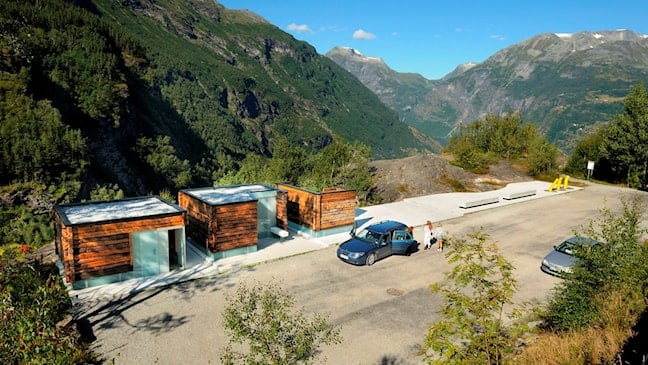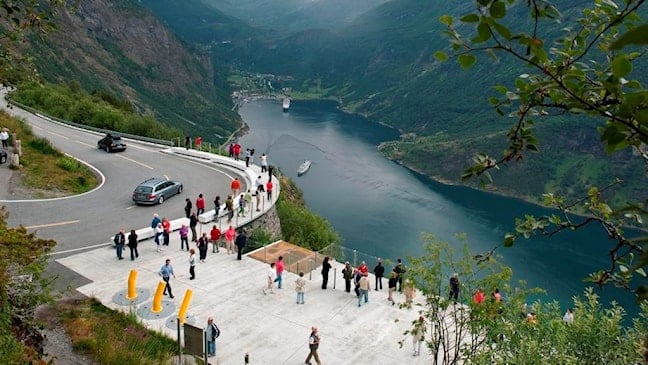3RW - Sixten Rahlff
Flydalsjuvet
The rest area is located near the steep hillside at the end of the Geirangerfjord.
- Architect:
- 3RW - Sixten Rahlff
- Landscape architect:
- Smedsvig Landskapsarkitekter AS
- Finished:
- 2006

When designing the service facilities and information boards at Flydalsjuvet, the architect Sixten Rahlff kept local building traditions in mind. The rest area is located near the steep hillside at the end of the Geirangerfjord. Centuries-old construction timber was used for the service building and information stand. The old timber has been combined with translucent glass walls that let the light in while remaining opaque.
Flydalsjuvet contains three elements, which in addition to the service building encompass a car park and several vantage points connected by paths and walkways. The viewing platform at Flydalsjuvet gorge is designed with an upper and lower level connected by a walkway.
Ørnesvingen
Ørnesvingen is one of two spectacular vantage points along the Norwegian Scenic Route Geiranger – Trollstigen.
- Architect:
- 3RW - Sixten Rahlff
- Landscape architect:
- Smedsvig Landskapsarkitekter AS
- Finished:
- 2006

The site is located amidst scenic natural surroundings with a breathtaking view over the Geirangerfjord. The design objective has been to reinforce the experience of this dramatic and unique landscape.
The Ørnesvingen site consists of two parts. On “the balcony”, three slabs of white concrete have been cast in place at varying heights, creating a landscape of steps, benches and open spaces towards the fjord and the scenery. An existing stream runs over a glass plane across the site before hurtling over the edge down to the fjord. In “the curve”, a concrete floor protrudes out over the old abutment wall. Broad benches in prefabricated, ground white concrete follow the shape of the driving lane, separating motorists and pedestrians.
The viewing platform has a glass decoration made by the artist May Elin Eikaas-Bjerk.